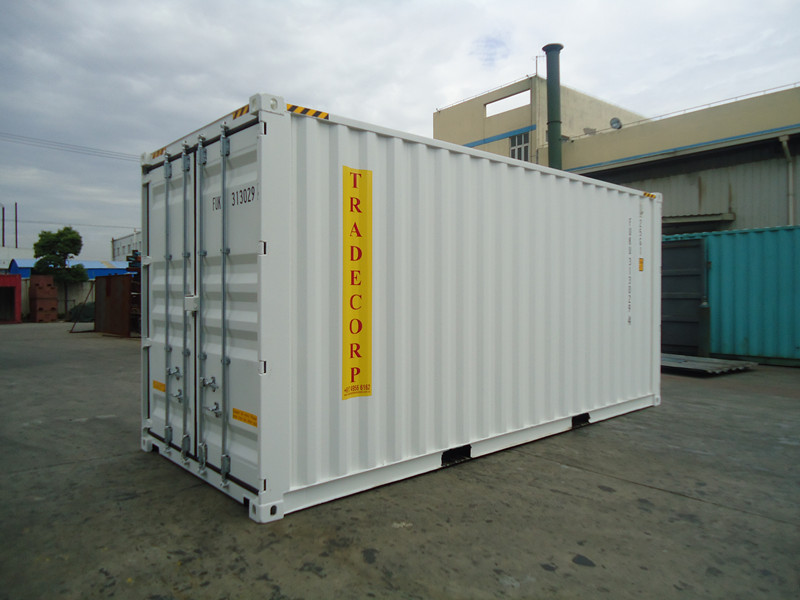The versatility of shipping containers has made them an innovative solution for various industries, from retail and hospitality to construction and storage. They are a cost-effective and sustainable option due to their ease of transportation and customizable features. One of the examples is when shipping cars using sea containers.
Before engaging in the business of shipping cars overseas, it is crucial to ensure that your carrier has the necessary experience. This experience is essential for the safe and reliable processing of orders in the countries where you acquire cars and their delivery by air or sea transport. Additionally, shipping cars in containers require proper preparation, including securing the vehicles to prevent damage during transit. Depending on the size and type of car, it may be more feasible to ship one car per container, ensuring proper protection and safe transport.
However, have you wondered how many cars would fit in a 20-foot conex box?
Ensuring the efficient transportation and stacking of shipping containers is vital for streamlining shipment processes and enhancing overall productivity. Standardization, a cornerstone of this efficiency, allows Conex boxes to rely on uniform dimensions, facilitating their effective stacking and transport. The absence of such standardization would compromise stacking efficiency, diminishing the container’s capacity for transporting goods.
Now, delving into the specifics of a 20-foot conex box’s capacity for cars, the standardized dimensions (20ft length x 8ft width x 8.6ft height) become crucial. It’s noteworthy that a standard 20-foot container may not provide sufficient space to accommodate two larger or mid-sized vehicles comfortably. Typically, such containers can transport one or two sedans or SUVs, while a 40-foot container offers a more cost-effective solution for transporting two to four mid-size vehicles. This is attributed to the fact that the actual length of most cars exceeds their apparent size when parked flat. For instance, a compact car like a Toyota Corolla measures over 15 feet. An exception to this is the Smart Car, approximately 9 feet long, making it the only car that can be accommodated two-by-two inside a shipping container.
In essence, the standardization of shipping containers supports the effective transportation of cars within a 20-foot container, but optimal utilization may necessitate the use of specialized racking systems. These systems enable unique arrangements, including tilting a car at an angle, ensuring efficient use of the container space.
Pros and Cons of Shipping Cars in a 20ft Container

Shipping cars overseas can be a challenging process, and using a 20ft container is one option to consider. However, there are pros and cons to this method that you should consider before deciding.
On the positive side, using a 20ft container to ship cars can protect from the weather and debris during transit. The container is completely enclosed and weather-resistant, which can help prevent damage to the vehicle. Additionally, using a container is more secure than open trailers, reducing the risk of theft or vandalism during transit. With the ability to lock the container with a padlock, you can be sure that your car is safe and secure during transportation. Using a 20ft container can also be more cost-effective if you’re only shipping one car, as you can use the extra space for other items.
On the downside, shipping cars in containers requires specialized equipment to load and unload the vehicles, which can add to the cost and complexity of the shipping process. Proper preparation, including securing the vehicles to prevent damage during transportation, is also necessary and can add to the overall time and cost of the shipping process.
Finally, while a 20-foot container can be a sturdy and durable solution for shipping dry goods and cargo, it may not be suitable for all types of cars. For larger or oversized vehicles, a 40ft container may be more suitable. Using a 20ft container to ship cars can have its advantages, it’s important to consider the potential drawbacks and ensure that this method is the best fit for your needs and budget.
Is it Worth Shipping Cars with Containers?
The decision to ship cars using sea containers depends on several factors, including the car’s size and type, budget, shipping destination, and other considerations. Shipping cars in dry containers is considered the safest way to transport a car overseas because the container’s steel exterior protects the car from external factors during transit. Using shipping containers for cars is a reliable and secure transportation option for international shipments, as accidental damage is less likely to occur over long distances.
To determine the best shipping method for your needs, it is recommended that you work with a professional shipping company that has experience in handling car shipments. If you are looking for 20ft containers to ship your cars, Tradecorp offers standard 20ft dry shipping containers as well as 20ft high cube shipping containers. Both new and used containers are available for sale. To get started and find the perfect containers for your needs, fill out the quote form on our website, and our team will respond promptly.
Can Shipping Containers Be Used as Car Garages?
Yes, a 20ft shipping container can be repurposed as a garage for cars. Shipping containers are built from durable steel, which makes them resilient and able to withstand different weather conditions, making them an excellent option for use as a garage. By installing appropriate insulation, ventilation, and electrical systems, a 20ft container can provide a secure and functional space for storing vehicles, tools, and other equipment.
However, it is crucial to keep in mind that local zoning and building codes may need to be followed when using a shipping container as a garage. Before starting the conversion process, it is recommended to research local policies or regulations and obtain any necessary permits.

